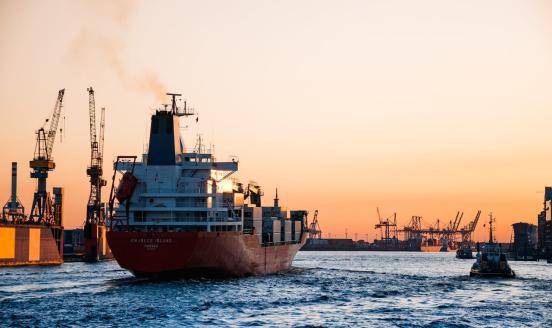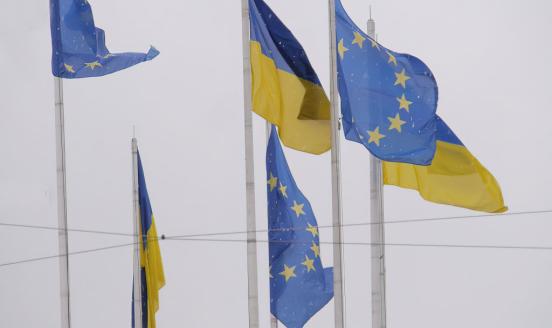The Transatlantic Trade and Investment Initiative: Hope or Hype?
The decision to launch negotiations on a bilateral free trade area between the EU and the US, called the Transatlantic Trade and Investment Partnershi
The decision to launch negotiations on a bilateral free trade area between the EU and the US, called the Transatlantic Trade and Investment Partnership (TTIP) or EU-US free trade area is being hailed on both sides of the Atlantic as a historic development. President Barroso has declared that a future deal “between the world’s two most important economic powers will be a game-changer”, which will not only set the standard for future EU bilateral trade agreements and “for the development of global rules” but also create “tens of billions of euros [in production] every year and tens of thousands of new jobs”. President Obama was more modest, devoting just one sentence of his State of the Union address to simply announce the decision to launch trade talks with the EU “because trade that is free and fair across the Atlantic supports millions of good-paying American jobs”.
Why have the EU and the US – which have low bilateral trade and investment barriers,already trade considerably with each other and are by far the main source and destination of their respective foreign investment flows – decided to undertake this “historic” project and at this point in time?
The idea to create a EU-US FTA is not new. In the 1960s, at the height of the Cold War, the US already proposed the creation of a North Atlantic Free Trade Area (NAFTA). In the 1990s,after the end of the Cold War, the impetus came from the EU, which proposed to create a TAFTA (Transatlantic Free Trade Area), the acronym NAFTA having meanwhile been adopted by the North American Free Trade Agreement. The main goal of TAFTA was not economic but political. It was the response to the fear, mainly by Germany and the United Kingdom that the end of the Cold War would result in disengagement by Americans from Europe and collapse of NATO. This initiative was no more successful than the previous one, but it led to the creation of the New Transatlantic Agenda, a forum to promote transatlantic regulatory cooperation, which had little success. It was later replaced by the New Transatlantic Economic Partnership, another initiative to reduce regulatory obstacles that was conceived in 2007 by Chancellor Merkel and President Bush to patch over their political differences over the second Iraq war, but had equally modest economic results.
The language of the Cold War seems to be again present in the mouth of some European leaders to justify the Transatlantic Trade and Investment Initiative. “This is about the weight of the western, free world in world economic and political affairs,” declared EU Trade Commissioner De Gucht at a recent conference. The enemy this time is not the Soviet Union but appears to be the BRICs (and in particular China), which already today have a combined GDP equivalent to that of the EU or the US and far greater when the comparison is made in purchasing power parity (PPP) instead of using exchange rates. At current exchange rates,China alone will be the world’s largest economy before 2030, a position it will probably reach already before 2020 when measuring GDP at PPP. President Obama linked explicitly in his State of the Union address the TTIP to the Trans-Pacific Partnership Initiative, which has been under way for a while and which China regards as economically and politically unfriendly.
The TTIP clearly aims to better prepare the EU and the US for the economic battle with the BRICs and other emerging powers. To do so, it will seek not only to remove the remaining trade barriers – that outside agriculture, a sector which will be mostly excluded de facto from the negotiation, are almost non existent – but will mainly focus on making EU and US rules and regulations “compatible” as Commissioner De Gucht stated.
Harmonizing or even mutual recognition of rules and regulations is clearly not an option. If it were the EU and the US would be able to create a Transatlantic Single Market that would be truly historical. But it would also mean that the EU and the US, which are democratic systems with different regulatory preferences and complex procedures that reflect their multi-level governance, would be ready to set aside their differences in the name of competitiveness and the threat of emerging countries.
If harmonization and mutual recognition are largely unattainable, then what making rules and regulations “compatible” mean? Not much beyond exchange of information and dialogue but does not add up to an economic “game-changer”. In fact the figure of “tens of thousands of new jobs” being created in Europe thanks to the TTIP, which must be compared to the nearly 25 million unemployed here, seems to confirm that the architects of the EU-US initiative are seeking political rather than economic objectives. The main goal is probably to reassure Europeans, who are the main demandeurs and who are undergoing some difficult times that America still views the transatlantic relationship as crucial.
At the end of the day the real question about the TTIP is what it will do to the multilateral trading that Americans and Europeans put in place at the end of World War Two and is clearly paining to adjust to the reality of a 21st century likely to be dominated by Asia. Will it encourage countries like China and India to help revive the WTO on the lines set by the TTIP or will they feel that the TTIP is a desperate initiative by the Old World to cling to their 20th century supremacy?
An Australian columnist recently argued that the EU-US initiative could mark the end of the “Asian Century” barely a decade after it began. I doubt it. I think there is more chance that, if it has any real effect other than a signature ceremony in Brussels and in Washington,it will mark the beginning of the end of the multilateral trading system as it exists today. The GATT/WTO system always consisted of two legs: a trade-liberalization leg and a rule-making leg, consisting of a set of rights and obligations and a system of dispute settlement in case they are not respected. With the first leg now more and more outside the multilateral system because of the proliferation of bilateral agreements, of which the EU-US FTA would be the largest, it is unlikely that the WTO’s other leg will remain sufficiently strong very long to sustain the multilateral trading system to which the EU and the US claim they are attached. Obviously the WTO will not entirely disappear, no international organization ever does. But it will become like another Geneva-based organization, the International Labor Organisation, a place with a beautiful view on the lake where ministers make nice speeches once a year but never take important decisions.



